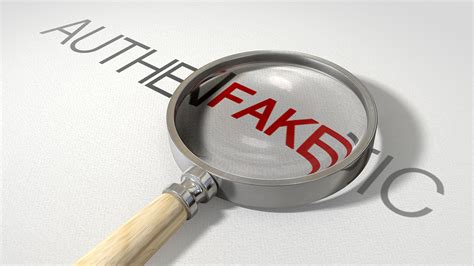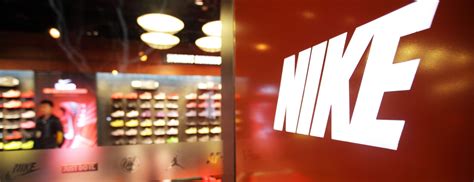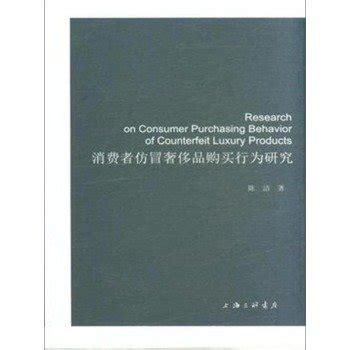How Does Social Media Influence Counterfeiting Trends?
1. The Impact of Social Media on Counterfeit Product Sales
Social media has transformed the way counterfeit products are marketed, making it easier for sellers to reach unsuspecting buyers. Platforms like Instagram, Facebook, and TikTok have become channels for promoting fake designer goods, often targeting consumers through ads, influencer endorsements, and user-generated content. Due to the high volume of daily posts, social media companies often struggle to monitor and remove counterfeit product listings effectively.

2. How Social Media Algorithms Affect Counterfeit Visibility
Social media algorithms are designed to increase user engagement by promoting content that garners high levels of interaction. Unfortunately, counterfeit sellers benefit from this because their posts, often featuring eye-catching products, receive ample attention. High engagement rates can push counterfeit listings to the top of feeds, making it difficult for consumers to discern between genuine and fake items. As these posts appear more frequently, consumer exposure to counterfeit goods rises significantly.
Key factors affecting counterfeit product visibility on social media platforms:
- Engagement-based algorithms: Content with more likes, comments, and shares gains visibility.
- Paid advertising options: Fake product sellers can target audiences with paid ads.
- Influencer endorsements: Influencers unknowingly or knowingly promote counterfeit goods.
3. The Role of Influencers in Promoting Counterfeit Products
Influencers play a significant role in the counterfeit industry, whether or not they realize it. Many influencers are approached by sellers to promote products that appear genuine but are actually counterfeit. In some cases, these influencers may receive fake items as gifts or samples, inadvertently advertising them to their followers. This can mislead consumers into believing these items are legitimate, thus increasing counterfeit sales.
While some influencers knowingly promote counterfeit items due to lucrative deals, many are unaware of their authenticity. This blurring of authenticity impacts consumer trust and encourages the proliferation of counterfeit goods.

4. How Social Media Ads Are Used in Counterfeit Product Marketing
Social media ads are an effective tool for counterfeit product marketers, who leverage sponsored posts to reach a larger audience. Paid ads can target specific demographics, increasing the likelihood of sales. For example, counterfeit handbag sellers may target fashion-conscious individuals who show interest in luxury brands. This targeted advertising amplifies the issue by placing counterfeit goods directly in front of interested buyers.
Below is a table summarizing how social media ads aid counterfeit marketing:
| Aspect | Role in Counterfeit Marketing |
|---|---|
| Targeted Demographics | Reaches consumers interested in specific brands |
| Sponsored Posts | Displays fake products in users’ feeds |
5. Social Media’s Role in Creating a Gray Market for Counterfeits
The term “gray market” refers to the sale of goods through unauthorized channels. Social media facilitates gray market transactions by providing counterfeit sellers with direct access to buyers. Unlike physical markets where legal enforcements can limit counterfeit sales, social media makes it difficult to regulate these transactions. Platforms are limited in their ability to verify sellers’ credibility, which leads to more gray-market transactions.
6. The Psychological Influence of Social Media on Consumer Purchases
Social media creates psychological triggers that can drive consumers toward purchasing counterfeit goods. Consumers often experience a fear of missing out (FOMO), seeing friends or influencers flaunting branded items. For some, purchasing counterfeit versions becomes a way to keep up with trends without the associated high costs. This psychological influence increases the likelihood of counterfeit purchases.

7. How Social Media Platforms Combat Counterfeiting
Major social media platforms have implemented several measures to combat counterfeiting. These efforts include stricter verification processes, machine learning algorithms to detect counterfeit listings, and partnerships with brands to report and remove fake products. Despite these initiatives, counterfeit sellers constantly adapt to bypass security measures, making it a challenging task for social media companies.
Steps social media platforms are taking to reduce counterfeit activities:
- Enhanced product listing verification
- AI-driven detection of suspicious activity
- Collaborations with brands to identify counterfeit goods
8. Legal Implications of Counterfeit Sales on Social Media
The sale of counterfeit products has serious legal implications for both sellers and platforms. Counterfeit goods violate intellectual property laws, and selling them is punishable by law. Social media companies, when failing to adequately address counterfeit issues, risk facing legal actions themselves. However, enforcing these laws is challenging, particularly with the global nature of social media transactions, which involve multiple jurisdictions.
9. Consumer Awareness of Counterfeit Goods on Social Media
Consumer awareness of counterfeit goods is critical in curbing the sale of fake items on social media. Education campaigns from brands and organizations aim to inform buyers about how to identify counterfeit products. Some platforms also provide resources or warnings when suspicious listings appear, helping users make informed purchasing decisions.

10. The Future of Counterfeit Trends in the Age of Social Media
As social media continues to grow, the future of counterfeit trends is uncertain. On one hand, increased technological advancements may enable platforms to better detect and eliminate counterfeit listings. On the other, counterfeit sellers may find new ways to exploit these platforms. Continuous efforts in improving security features and educating consumers will be essential in tackling this ongoing issue.
Summary Table
| Aspect | Influence on Counterfeit Trends |
|---|---|
| Social Media Algorithms | Increase visibility of counterfeit products |
| Influencers | Promote counterfeit products, knowingly or unknowingly |
| Consumer Psychology | Drives demand for counterfeit items |
FAQ
1. How does social media facilitate counterfeit product sales?
Social media allows counterfeit sellers to reach a wide audience quickly, often through targeted ads and engaging posts.
2. What impact do social media algorithms have on counterfeit visibility?
Engagement-based algorithms can boost the visibility of counterfeit listings, making them more accessible to potential buyers.
3. Can influencers unknowingly promote counterfeit goods?
Yes, many influencers may unknowingly advertise counterfeit products they believe to be genuine.
4. What are the legal risks for counterfeit sellers on social media?
Selling counterfeit goods is illegal and can lead to legal repercussions for the seller and potentially the platform.
5. How can consumers identify counterfeit products on social media?
Consumers can look for red flags, such as low prices for luxury items, lack of brand verification, and poor product reviews.
6. How do social media companies work to prevent counterfeit listings?
Platforms use verification processes, AI detection, and partnerships with brands to help reduce counterfeit listings.
7. What is the future of counterfeit trends on social media?
While platforms are working on better detection tools, counterfeit sellers are continuously finding new ways to evade these measures.


